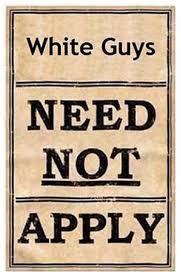White Americans long for the 1950s, when they didn’t face so much discrimination
Share
Explore Our Galleries
Breaking News!
Today's news and culture by Black and other reporters in the Black and mainstream media.
Ways to Support ABHM?
By Janell Ross, the Washington Post
In a new poll released by the Public Religion Research Institute (PRRI) on Tuesday, a whopping 43 percent of Americans told researchers that discrimination against whites has become as large a problem as discrimination against blacks and other minority groups. And an even bigger share of Americans — 53 percent — told pollsters American culture and “way of life” have mostly changed for the worse since 1950.
The two would appear to be related. Here’s how.
First, there are some real and large differences in the way that different groups of Americans answered those two questions up above. Half of white Americans — including 60 percent of the white working class — told researchers that discrimination against whites has become as big a problem today as discrimination against blacks and other minorities. Meanwhile, 29 percent of Latinos and 25 percent of black Americans agreed. White Americans feel put-upon and mistreated — and large shares of non-white Americans do not seem to have any knowledge of the challenges that white Americans say they face.
Of course, there are always aspects of other people’s lives that we do not or cannot understand. But the sheer size of the racial/ethnic gap concerning perceived discrimination against white Americans is particularly interesting because there is very little in the way of objective evidence of this discrimination and the disadvantage that typically follows. On just about every measure of social or economic well-being, white Americans fare better than any other group…
White Americans are, as a group, born healthier and live longer and get better health care, jobs, education and housing in the years in between. Yet half of white Americans believe that discrimination against them is as big a problem in their lives as it is for those of people of color. But there’s just no evidence to back that up.
What does exist is ample evidence of continued-but-shrinking racial and ethnic inequality in many arenas and utter stagnation and backsliding in others. Basically, what’s changed since the 1950s — outside of technological innovations such as this here Internet — is that white Americans no longer have an exclusive or almost-exclusive hold on the best housing, jobs, schools or the ballot box…
A full 60 percent of black Americans and 54 percent of Latinos told PRRI researchers that American culture has mostly changed for the better since the 1950s. In contrast, only 42 percent of white Americans agreed. In fact, 57 percent of white Americans told pollsters that the American way of life has mostly changed for the worse over the past 60 years.
Yes, nearly 60 percent of white Americans believe that life in America before the advent of the cassette tape, the ATM, IVF, the hand-held calculator and the bar code was better than it is today. Apparently life was very good for these Americans, when segregated public facilities were a legal requirement in the South and Southeast and a social norm in many other places. Most people of color could not obtain credit or a loan from most “mainstream” banks. Most women of all races and ethnicities could not do so either. This was a vastly different America, one where life was not at all easy for a whole lot of people. Still, this is the America for which apparently many white Americans long.
That this is understood as a better “way of life” is, to say the least, disturbing…
To believe the things highlighted in the PRRI poll, one either has to be tragically misinformed, unwilling to accept widely available facts or utterly unconcerned with the conditions that shape many Americans’ lives…
Read the full article here.
Read more Breaking News here.









Comments Are Welcome
Note: We moderate submissions in order to create a space for meaningful dialogue, a space where museum visitors – adults and youth –– can exchange informed, thoughtful, and relevant comments that add value to our exhibits.
Racial slurs, personal attacks, obscenity, profanity, and SHOUTING do not meet the above standard. Such comments are posted in the exhibit Hateful Speech. Commercial promotions, impersonations, and incoherent comments likewise fail to meet our goals, so will not be posted. Submissions longer than 120 words will be shortened.
See our full Comments Policy here.